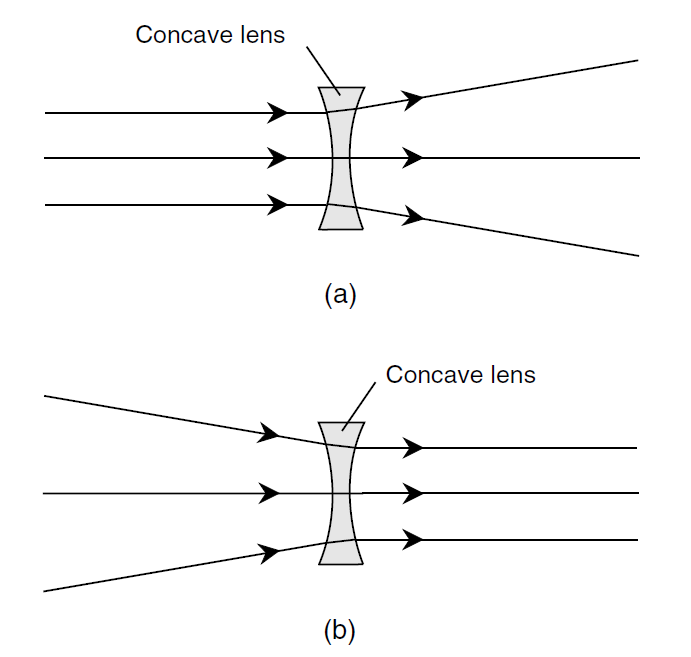


 الفيزياء الكلاسيكية
الفيزياء الكلاسيكية
 الكهربائية والمغناطيسية
الكهربائية والمغناطيسية
 علم البصريات
علم البصريات
 الفيزياء الحديثة
الفيزياء الحديثة
 النظرية النسبية
النظرية النسبية
 الفيزياء النووية
الفيزياء النووية
 فيزياء الحالة الصلبة
فيزياء الحالة الصلبة
 الليزر
الليزر
 علم الفلك
علم الفلك
 المجموعة الشمسية
المجموعة الشمسية
 الطاقة البديلة
الطاقة البديلة
 الفيزياء والعلوم الأخرى
الفيزياء والعلوم الأخرى
 مواضيع عامة في الفيزياء
مواضيع عامة في الفيزياء|
Read More
Date: 17-3-2016
Date: 9-11-2020
Date: 9-11-2020
|
THE CONCAVE LENS
You will have some trouble finding a concave lens in a department store, but you should be able to order one from a specialty catalog or a Web site. The term concave refers to the fact that one or both faces of the glass bulge inward at the center. This type of lens is also called a diverging lens. It spreads parallel light rays outward (Fig. 1a). It can collimate converging rays if the convergence angle is just right (see Fig. 1b).
As with convex lenses, the properties of a concave lens depend on the diameter and the extent to which the surface(s) depart from flat. The greater the difference in thickness between the edges and the center of the lens, the

Fig. 1. (a) A concave lens spreads parallel light rays. (b) The same lens collimates converging light rays.
more the lens will cause parallel rays of light to diverge. If you look through a concave lens at a close-in object such as a coin, the features are reduced; they appear smaller than they look with the unaided eye.
The surfaces of concave lenses, like those of their convex counterparts, are generally spherical. Some concave lenses have the same radius of curvature on each face; others have different radii of curvature on their two faces. Some diverging lenses have one flat face; these are called planoconcave lenses.



|
|
|
|
دراسة يابانية لتقليل مخاطر أمراض المواليد منخفضي الوزن
|
|
|
|
|
|
|
اكتشاف أكبر مرجان في العالم قبالة سواحل جزر سليمان
|
|
|
|
|
|
|
اتحاد كليات الطب الملكية البريطانية يشيد بالمستوى العلمي لطلبة جامعة العميد وبيئتها التعليمية
|
|
|